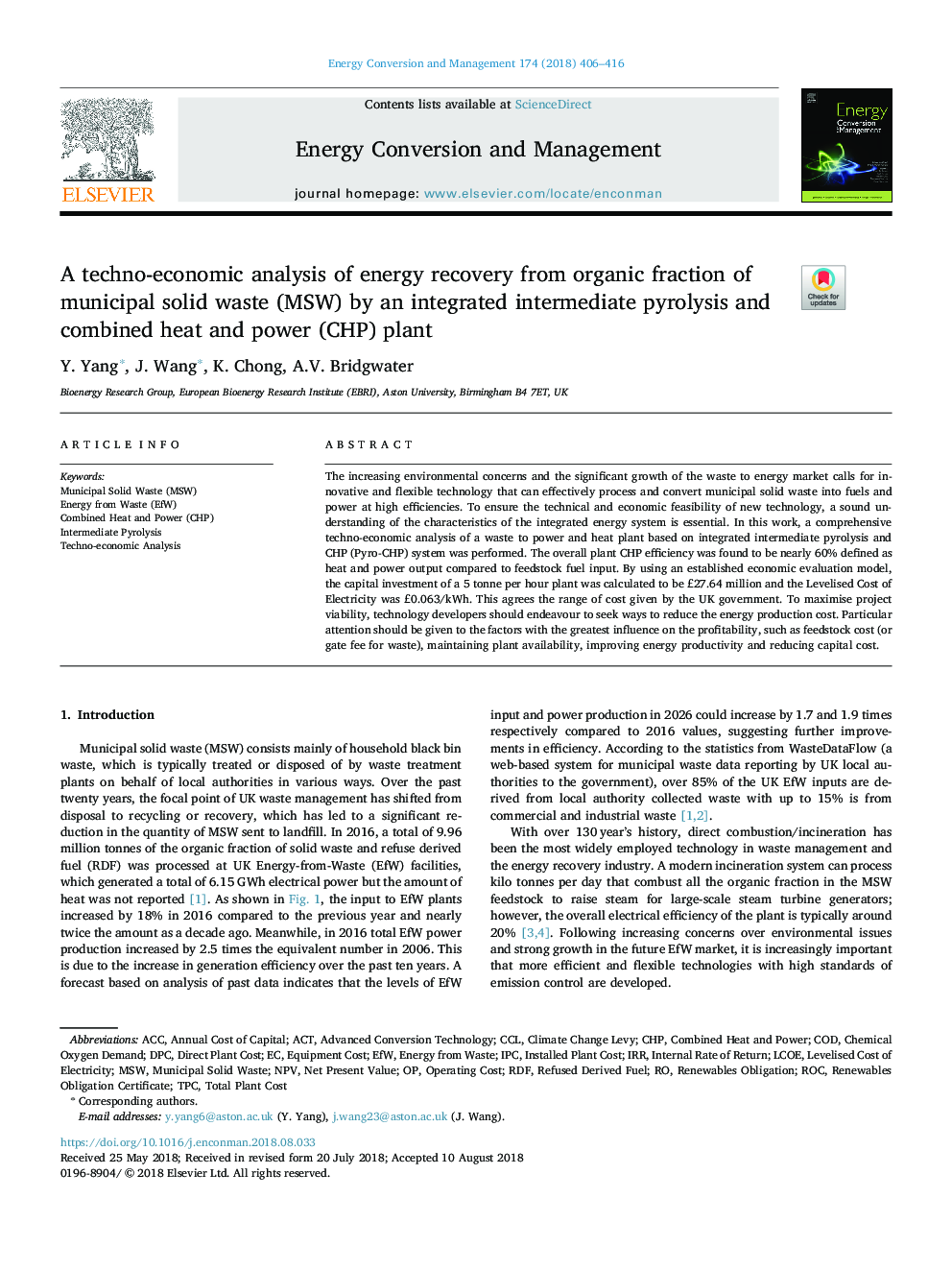| Article ID | Journal | Published Year | Pages | File Type |
|---|---|---|---|---|
| 11003819 | Energy Conversion and Management | 2018 | 11 Pages |
Abstract
The increasing environmental concerns and the significant growth of the waste to energy market calls for innovative and flexible technology that can effectively process and convert municipal solid waste into fuels and power at high efficiencies. To ensure the technical and economic feasibility of new technology, a sound understanding of the characteristics of the integrated energy system is essential. In this work, a comprehensive techno-economic analysis of a waste to power and heat plant based on integrated intermediate pyrolysis and CHP (Pyro-CHP) system was performed. The overall plant CHP efficiency was found to be nearly 60% defined as heat and power output compared to feedstock fuel input. By using an established economic evaluation model, the capital investment of a 5 tonne per hour plant was calculated to be £27.64 million and the Levelised Cost of Electricity was £0.063/kWh. This agrees the range of cost given by the UK government. To maximise project viability, technology developers should endeavour to seek ways to reduce the energy production cost. Particular attention should be given to the factors with the greatest influence on the profitability, such as feedstock cost (or gate fee for waste), maintaining plant availability, improving energy productivity and reducing capital cost.
Keywords
CHPNPVClimate Change LevyRefused Derived FuelDPCCCLIPCIRREFWACTTPCLCOEACCRDFROCMSWnet present valueEnergy from wasteTechno-economic analysisCombined Heat and PowerRenewables Obligationchemical oxygen demandMunicipal solid wasteMunicipal solid waste (MSW)Internal rate of returnLevelised cost of electricityoperating costIntermediate PyrolysisCodCombined Heat and Power (CHP)
Related Topics
Physical Sciences and Engineering
Energy
Energy (General)
Authors
Y. Yang, J. Wang, K. Chong, A.V. Bridgwater,
